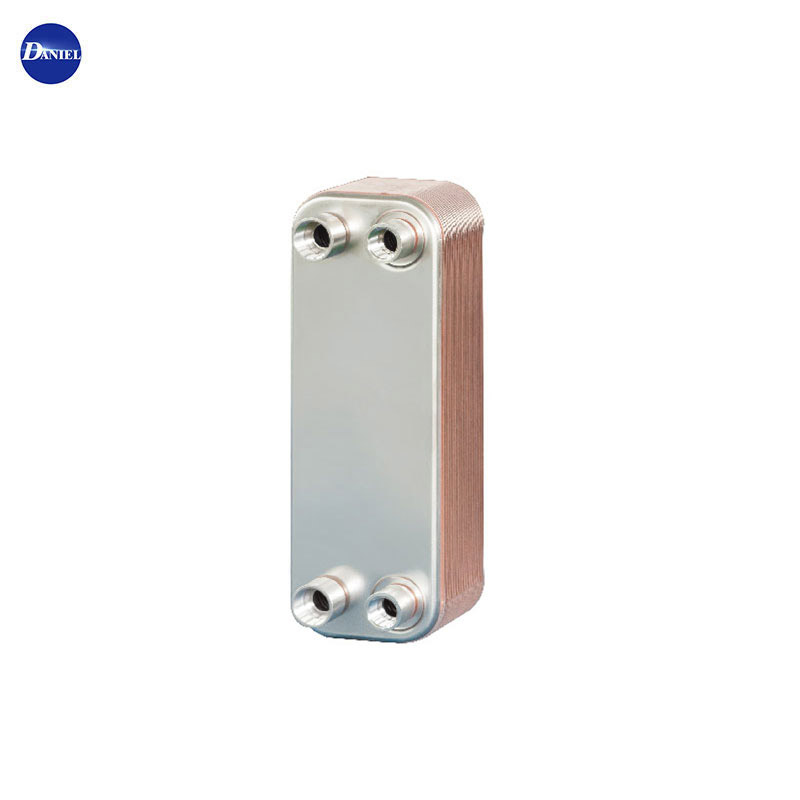Brazed Plate Heat Exchanger: A Compact Solution for Efficient Heat Transfer
2025-03-21
When it comes to industrial and commercial applications that require efficient thermal management, the brazed plate heat exchanger (BPHE) is an essential component. Compact, efficient, and highly reliable, this type of heat exchanger has become a preferred choice in many sectors, including HVAC, refrigeration, and various manufacturing industries. In this blog, we will explore what a brazed plate heat exchanger is, how it works, its benefits, and why it's a game-changer in heat transfer technology.
What is a Brazed Plate Heat Exchanger?
A brazed plate heat exchanger is a heat transfer device made up of multiple thin plates stacked together. These plates create numerous channels through which hot and cold fluids can flow, transferring heat between them. The key feature of a brazed plate heat exchanger is that the plates are brazed together using a metal alloy, which provides excellent sealing and structural integrity.
Unlike other types of heat exchangers, brazed plate heat exchangers do not require gaskets or mechanical seals, which makes them highly resistant to leakage. They are compact, space-saving devices ideal for applications where space is limited.
How Does a Brazed Plate Heat Exchanger Work?
The operation of a brazed plate heat exchanger revolves around the efficient transfer of heat between two fluids—one hot and the other cold. These fluids are passed through alternating channels in the plates. The hot fluid flows through one set of channels, and the cold fluid flows through the opposite set. As the fluids pass close to each other within the plates, heat is transferred from the hot fluid to the cold fluid without the two fluids mixing.
The plates are usually made of materials such as stainless steel, which is resistant to corrosion and can handle high temperatures and pressures. The brazing process, which involves fusing the plates together with a metal alloy, ensures that there are no leaks between the channels, and the heat transfer process remains highly efficient.
Benefits of Brazed Plate Heat Exchangers
1. Compact Design
One of the standout features of brazed plate heat exchangers is their compact design. Because they use a series of stacked plates instead of large coils or tubes, they can transfer a significant amount of heat in a much smaller footprint. This makes them ideal for applications where space is at a premium, such as in compact HVAC systems, small industrial plants, and refrigeration units.
2. High Heat Transfer Efficiency
The plate construction of brazed plate heat exchangers provides a large surface area for heat transfer. This allows them to efficiently transfer heat between fluids, even with a relatively small temperature difference. The turbulence created by the fluids flowing through the narrow channels between the plates further enhances heat transfer, making brazed plate heat exchangers one of the most efficient types of heat exchangers available.
3. Leak-Free Performance
Due to the brazing process, brazed plate heat exchangers do not rely on gaskets or seals to prevent leaks. The brazing of the plates forms a solid bond that is highly resistant to leakage, ensuring that the fluids remain contained. This makes brazed plate heat exchangers particularly reliable and suitable for high-pressure applications, such as in refrigeration systems, chemical processing, and power generation.
4. Corrosion Resistance
The materials used in brazed plate heat exchangers, such as stainless steel, offer excellent resistance to corrosion. This ensures a long service life, even when the heat exchanger is exposed to harsh chemicals or extreme temperatures. Their resistance to corrosion also makes them a suitable choice for use in marine environments or areas with high humidity.
5. Easy Maintenance
Brazed plate heat exchangers are generally easy to maintain, requiring minimal servicing. Since they are smaller and lighter than traditional heat exchangers, they can be easily accessed for cleaning and inspection. The absence of gaskets and seals means there are fewer parts that need regular maintenance or replacement.
6. Versatility
Brazed plate heat exchangers can be used in a wide range of applications. They are commonly found in HVAC systems, refrigeration units, chemical processing, and power plants, but their versatility extends to many other industries as well. Whether used for cooling, heating, or heat recovery, brazed plate heat exchangers can meet the specific needs of various processes and industries.
Applications of Brazed Plate Heat Exchangers
Brazed plate heat exchangers are used in a variety of industries due to their efficiency and versatility. Some common applications include:
- Refrigeration: BPHEs are widely used in refrigeration systems for both heating and cooling processes. They provide an efficient way to transfer heat between refrigerants and other fluids.
- HVAC Systems: In heating, ventilation, and air conditioning (HVAC) systems, BPHEs help to regulate the temperature of the air and water in buildings, providing optimal energy efficiency and temperature control.
- Chemical Processing: Brazed plate heat exchangers are used in chemical processing to control the temperature of reactants and maintain optimal reaction conditions.
- Marine Applications: Due to their resistance to corrosion, brazed plate heat exchangers are commonly used in marine systems, where they help regulate temperature in engine cooling systems and other critical processes.
- Power Generation: BPHEs are also used in power plants to manage the heat transfer processes within turbines and other equipment, improving energy efficiency and reducing operating costs.
Why Choose a Brazed Plate Heat Exchanger?
The decision to use a brazed plate heat exchanger comes down to the need for high-efficiency heat transfer in a compact, reliable, and corrosion-resistant package. Their ability to provide exceptional heat transfer in a small space makes them ideal for industries and applications that require both performance and space optimization.
Additionally, the leak-free operation and long lifespan make brazed plate heat exchangers a cost-effective solution in the long run, reducing the need for frequent maintenance or replacements. Whether you’re involved in refrigeration, HVAC, chemical processing, or other heat transfer applications, the brazed plate heat exchanger offers a range of benefits that will improve efficiency and reliability.
Conclusion
The brazed plate heat exchanger is an advanced, efficient solution for heat transfer that has become indispensable in many industries. Its compact design, high heat transfer efficiency, leak-free performance, and versatility make it a go-to choice for applications that require effective temperature regulation and minimal maintenance. If you're looking to improve the performance of your heating or cooling systems, consider integrating a brazed plate heat exchanger into your setup for enhanced energy efficiency and reliability.



